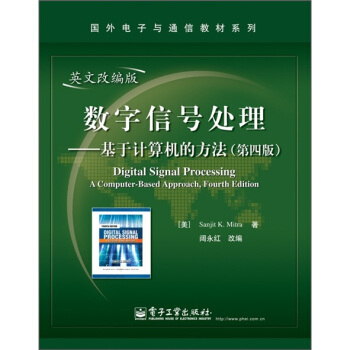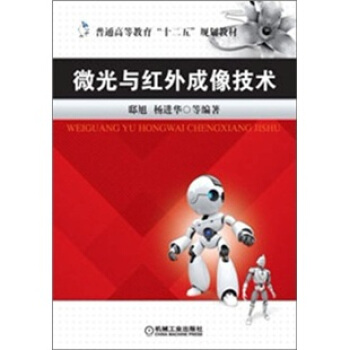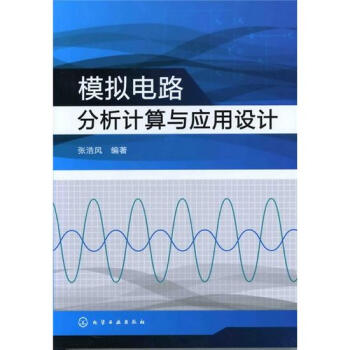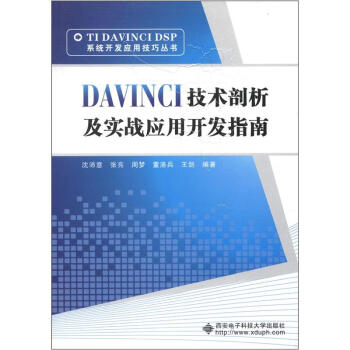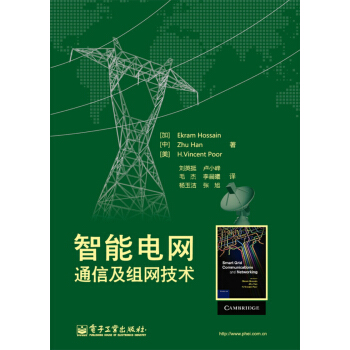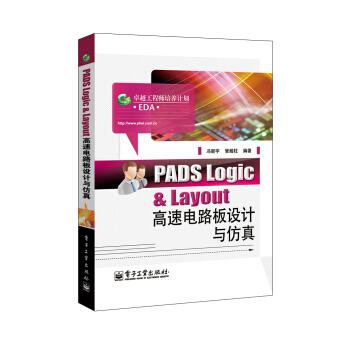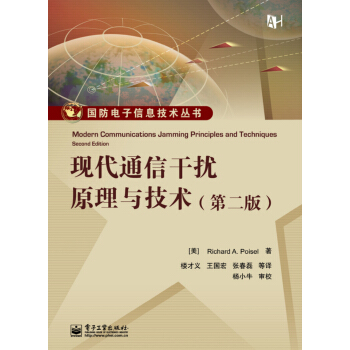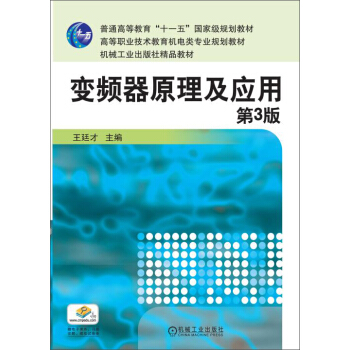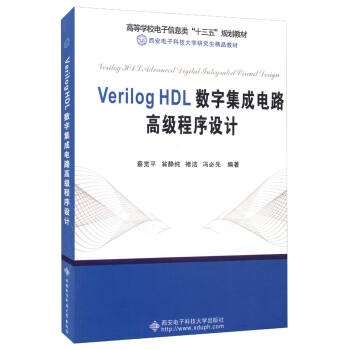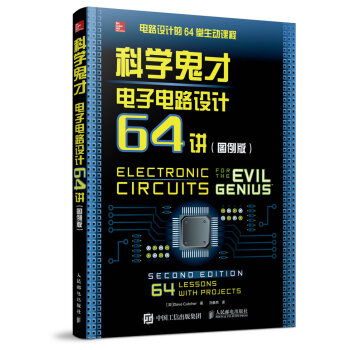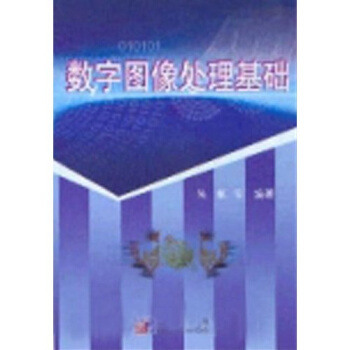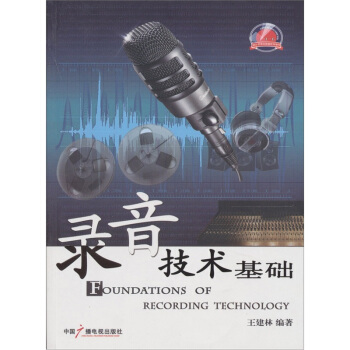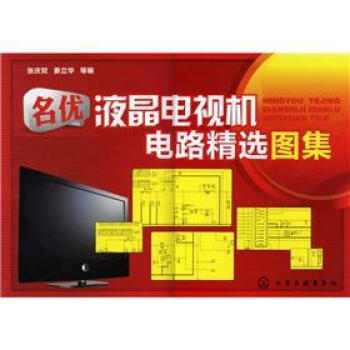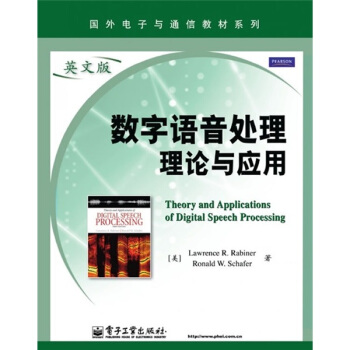

具体描述
内容简介
《国外电子与通信教材系列:数字语音处理理论与应用(英文版)》是作者继1978年版经典教材digital processing of speech signals之后的又一著作,《国外电子与通信教材系列:数字语音处理理论与应用(英文版)》除有简练精辟的基础知识介绍外,系统介绍了近30年来语音信号处理的新理论、新方法和在应用上的新进展。《国外电子与通信教材系列:数字语音处理理论与应用(英文版)》共14章,分四部分:一部分介绍语音信号处理基础知识,主要包括数字信号处理基础、语音产生机理、(人的)听觉和听感知机理和声道中的声传播原理;第二部分介绍语音信号的时频域表示和分析;第三部分介绍语音参数估计算法;第四部分介绍语音信号处理的应用,主要包括语音编码、语音和音频信号的频域编、语音合成、语音识别和自然语言理解。《国外电子与通信教材系列:数字语音处理理论与应用(英文版)》可供高等院校通信、电子、信息、计算机等专业作为研究生和本科生教材,也可以供有关科研和工程技术人员参考,是一本既有系统的基础理论讲解、又有新研究前沿介绍并密切结合应用发展的教材。
作者简介
Lawrence R.Rabiner,美国工程院和美国科学院院士,美国声学学会、IEEE、Bell实验室、AT&T;会士,以及Eta Kappa Nu、Sigma Xi、Tau Beta Pi等荣誉学会会员。曾担任美国声学学会副主席、IEEE Trans.ASSP主编和IEEE Proceedings编委会成员。其主要研究方向包括:通信、控制与信号处理、数字信号处理、数字语音处理、多媒体通信、多模态处理等。Rabiner教授于2002年从AT&T;退休,随后担任Rutgers大学和加州大学圣巴巴拉分校的教授,以及Rutgers大学先进信息处理中心副主任。目录
prefacechapter 1 introduction to digital speechprocessing
1.1 the speechsignal
1.2 the speechstack
1.3 applicationsof digital speechprocessing
1.4 commentonthe references
1.5 summary
chapter 2 reviewof fundamentalsof digitalsignalprocessing
2.1 introduction
2.2 discrete-time signals and systems
2.3 transform representation of signals and systems
2.4 fundamentalsof digitalfilters
2.5 sampling
2.6 summary
problems
chapter 3 fundamentalsof human speechproduction
3.1 introduction
3.2 the processofspeechproduction
3.3 short-timefourierrepresentationofspeech
3.4 acousticphonetics
3.5 distinctivefeaturesof thephonemesof american english
3.6 summary
problems
chapter 4 hearing,auditory models,and speechperception
4.1 introduction
4.2 the speechchain
4.3 anatomy andfunctionof theear
4.4 the perception of sound
4.5 auditory models
4.6 human speechperceptionexperiments
4.7 measurementofspeechqualityand intelligibility
4.8 summary
problems
chapter 5 sound propagationinthe humanvocaltract
5.1 the acoustictheoryofspeechproduction
5.2 losslesstube models
5.3 digital models forsampled speechsignals
5.4 summary
problems
chapter 6 time-domainmethods for speechprocessing
6.1 introduction
6.2 short-timeanalysisofspeech
6.3 short-timeenergyand short-timemagnitude
6.4 short-timezero-crossing rate
6.5 the short-timeautocorrelation function
6.6 the modied short-timeautocorrelation function
6.7 the short-timeaverage magnitude differencefunction
6.8 summary
problems
chapter 7 frequency-domainrepresentations
7.1 introduction
7.2 discrete-timefourieranalysis
7.3 short-timefourieranalysis
7.4 spectrographicdisplays
7.5 overlapaddition methodof synthesis
7.6 filter bank summationmethodof synthesis
7.7 time-decimatedfilter banks
7.8 two-channelfilter banks
7.9 implementationof thefbs method usingthe fft
7.10 olarevisited
7.11 modicationsof thestft
7.12 summary
problems
chapter 8 thecepstrumand homomorphic speechprocessing
8.1 introduction
8.2 homomorphicsystems forconvolution
8.3 homomorphicanalysisofthe speechmodel
8.4 computingthe short-timecepstrumand complexcepstrum of speech
8.5 homomorphicfilteringofnatural speech
8.6 cepstrumanalysisofall-pole models
8.7 cepstrumdistancemeasures
8.8 summary
problems
chapter 9 linear predictive analysisof speechsignals
9.1 introduction
9.2 basic principles of linear predictive analysis
9.3 computationofthe gainfor themodel
9.4 frequencydomaininterpretationsof linear predictiveanalysis
9.5 solutionofthe lpcequations
9.6 the prediction errorsignal
9.7 somepropertiesofthe lpcpolynomial a(z)
9.8 relationoflinear predictive analysisto losslesstube models
9.9 alternative representationsof thelpparameters
9.10 summary 560problems
chapter 10 algorithms for estimating speechparameters
10.1 introduction
10.2 mediansmoothing and speechprocessing
10.3 speech-background/silencediscrimination
10.4 abayesianapproach tovoiced/unvoiced/silence detection
10.5 pitch period estimation(pitch detection)
10.6 formant estimation
10.7 summary 645problems
chapter 11 digitalcodingof speechsignals
11.1 introduction
11.2 sampling speechsignals
11.3 astatisticalmodelfor speech
11.4 instantaneous quantization
11.5 adaptivequantization
11.6 quantizingofspeechmodelparameters
11.7 generaltheoryof differentialquantization
11.8 delta modulation
11.9 differentialpcm (dpcm)
11.10 enhancements foradpcm coders
11.11 analysis-by-synthesis speechcoders
11.12 open-loop speechcoders
11.13 applicationsof speechcoders
11.14 summary 819problems
chapter 12 frequency-domaincodingof speechandaudio
12.1 introduction
12.2 historicalperspective
12.3 subband coding
12.4 adaptivetransform coding
12.5 aperception modelforaudiocoding
12.6 mpeg-1audiocoding standard
12.7 otheraudiocoding standards
12.8 summary 894problems
chapter 13 text-to-speechsynthesis methods
13.1 introduction
13.2 text analysis
13.3 evolutionof speechsynthesis methods
13.4 early speechsynthesis approaches
13.5 unitselection methods
13.6 tts future needs
13.7 visual tts
13.8summary 947problems
chapter 14 automatic speechrecognition andnatural language understanding
14.1 introduction
14.2 basic asrformulation
14.3 overall speechrecognition process
14.4 buildinga speechrecognition system
14.5 the decisionprocessesinasr
14.6 step3:the search problem
14.7 simpleasr system: isolateddigit recognition
14.8 performance evaluationof speechrecognizers
14.9 spokenlanguage understanding
14.10 dialog managementand spokenlanguage generation
14.11 user interfaces
14.12 multimodaluserinterfaces
14.13 summary 984problems
appendices
a speechandaudioprocessing demonstrations
b solutionoffrequency-domaindifferentialequations
bibliography
index
前言/序言
用户评价
最近在研究自然语言处理,想找一本能够深入理解语音信号本身的书籍。《数字语音处理理论与应用》这本书确实给了我不少启发。它在理论部分的讲解非常扎实,涵盖了从时域到频域的各种分析方法,比如短时傅里叶变换(STFT)和梅尔频率倒谱系数(MFCC)的提取过程,书中都有非常详细的数学推导和图示说明。这对于我理解语音特征的提取原理非常有帮助。虽然它是一本“英文原版”,但翻译过来的中文术语也比较规范,加上丰富的公式和图表,即便遇到一些生僻的专业术语,也能通过上下文和图示来理解。尤其是在讨论语音信号的建模时,书中对比了多种模型,如高斯混合模型(GMM)和隐马尔可夫模型(HMM),并详细解释了它们在语音识别中的应用。这种对不同模型优劣势的分析,让我对语音识别的底层技术有了更深刻的认识,也为我后续的算法选择提供了宝贵的参考。
评分一直以来,我对声纹识别和身份认证技术非常感兴趣,也接触过一些相关的入门级书籍。当拿到这本《数字语音处理理论与应用》时,我被其对声学特征提取和建模的详尽描述所吸引。书中关于语音信号的端点检测、噪声抑制以及说话人相关的特征提取(如LPC、MFCC、PLP等)的讲解,都非常细致,并且解释了这些特征的物理意义和数学原理。然而,令我感到有些遗憾的是,书中在声纹识别的应用层面,似乎并没有进行足够深入的探讨。虽然提到了说话人识别和验证,但更多的是理论上的介绍,缺乏实际的算法流程、数据库构建、模型训练和性能评估等方面的具体指导。我希望能看到更多关于如何将这些提取的语音特征应用于声纹识别的案例分析,以及各种声纹识别算法(如GMM-UBM, i-vector, x-vector)的详细比较和实现细节。
评分我是一名语音合成方向的研究生,在导师的推荐下阅读了这本《数字语音处理理论与应用》。这本书的内容非常全面,尤其是它对语音信号产生和感知的相关理论的探讨,让我受益匪浅。书中详细阐述了语音产生的声学模型,如声源-滤波器模型,以及不同发音器官如何影响语音的产生。在感知部分,它深入讲解了人耳对声音的感知特性,以及如何将这些特性应用于语音信号的处理,比如梅尔刻度(Mel scale)的引入。这对于我理解为什么某些语音特征比其他特征更有效,以及如何设计更符合人类听觉的合成系统,提供了坚实的理论基础。此外,书中关于语音信号的各种变换(如WOLA变换)和模型(如周期性分析)的介绍,也为我探索新的合成技术提供了思路。虽然书中内容庞大,需要反复研读,但其深度和广度足以支撑我在语音合成领域进行更深入的研究。
评分作为一个长期从事嵌入式系统开发的工程师,我一直对如何将复杂的信号处理算法移植到资源受限的硬件上感到头疼。这本《数字语音处理理论与应用》在理论部分讲解得非常透彻,但我在实际应用层面,尤其是在优化算法的计算复杂度方面,遇到了一些瓶颈。书中对一些经典算法的介绍,比如自适应滤波器的原理和几种常见的自适应算法(如LMS和RLS),虽然理论清晰,但在如何进行高效的浮点运算或定点运算优化方面,似乎没有直接给出详细的指导。我希望书中能有更多的篇幅来讨论算法的工程实现和性能优化,例如如何减少乘加运算的次数,如何利用并行计算等。虽然书中提到了“应用”二字,但我感觉理论讲解占据了绝大部分,而实际的工程案例和优化技巧则相对较少,这让我在将这些理论知识转化为实际可用的代码时,感到有些力不从心。
评分我一直对信号处理领域充满好奇,尤其是它在语音交互和人工智能方面的潜力。偶然翻到这本《数字语音处理理论与应用》,第一印象就是它庞大的篇幅和严谨的学术风格。虽然我并非科班出身,但当我深入阅读后,却被书中系统性的知识体系深深吸引。作者从最基础的数字信号处理原理讲起,循序渐进地引入了傅里叶变换、滤波器设计等核心概念。这些理论基础的铺垫,对于理解后续复杂的语音处理算法至关重要。书中不仅仅是理论的堆砌,还穿插了大量的公式推导和数学证明,这让我深刻理解了每个算法背后的数学原理,而非仅仅停留在“调包侠”的层面。例如,关于线性预测编码(LPC)的讲解,我之前只是知道它是一种语音压缩技术,但通过书中详细的算法推导,我才真正理解了其利用语音信号自相关性来建模的精妙之处。这种深入浅出的讲解方式,让我在阅读过程中充满了探索的乐趣,也极大地拓展了我对数字信号处理的认知边界。
评分1.3 Applicationsof Digital SpeechProcessing
评分2.6 Summary
评分2.3 Transform Representation of Signals and Systems
评分朋友推荐的,刚到手,还没看,看完再评!!!!!!!!!
评分当然,它有很大的缺点,对史料以及很多文化层级,不可能做到很深入。我觉得研究汉学,很重要一个部分,是要取之于各种学问的长处,要有比较和宽大的视野。内心中有这样一个前提写出来的,跟只是就这个而写出来的东西,实际上有不同。
评分3.5 DistinctiveFeaturesof thePhonemesof American English
评分4.2 The SpeechChain
评分当然,我也认为西方的汉学家和早期不太一样。早期的汉学大家,基本上比较站在欣赏的角度,我们来共享这个知识,感谢你来和我们一起共享古老文明的智慧。年轻一辈,更试着要接近欧美学术主流,把他研究的中国问题去附和那一部分。附和的好处,是可以做得很漂亮,坏处是这不是它原来的样子。
评分活动时买的,很给力~~~~~~~
相关图书
本站所有内容均为互联网搜索引擎提供的公开搜索信息,本站不存储任何数据与内容,任何内容与数据均与本站无关,如有需要请联系相关搜索引擎包括但不限于百度,google,bing,sogou 等
© 2025 book.idnshop.cc All Rights Reserved. 静思书屋 版权所有

